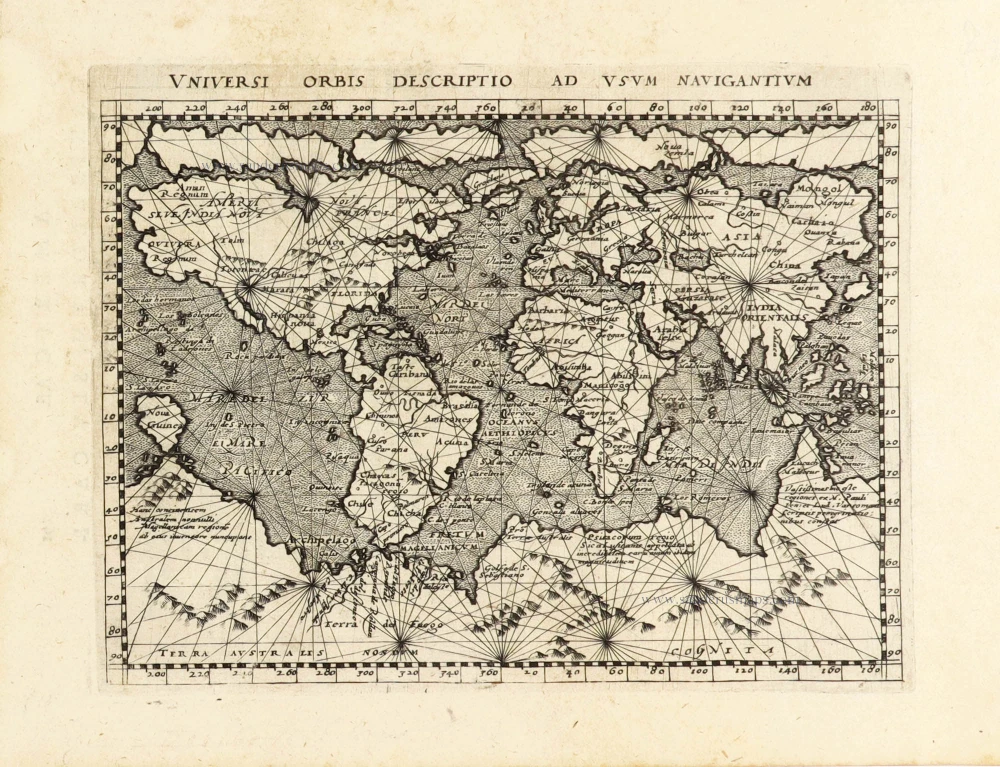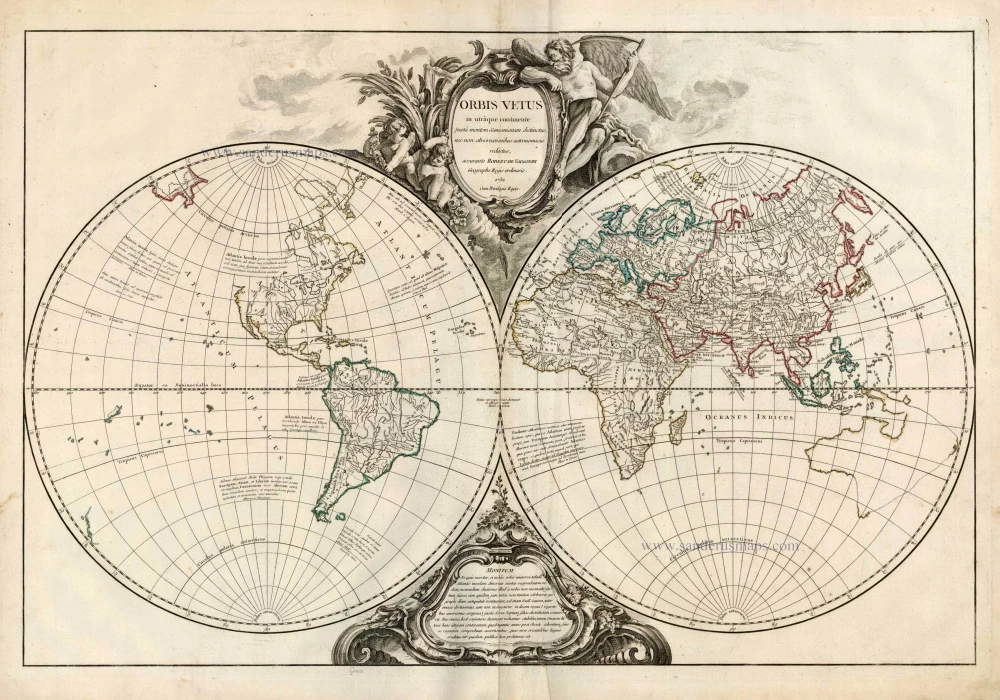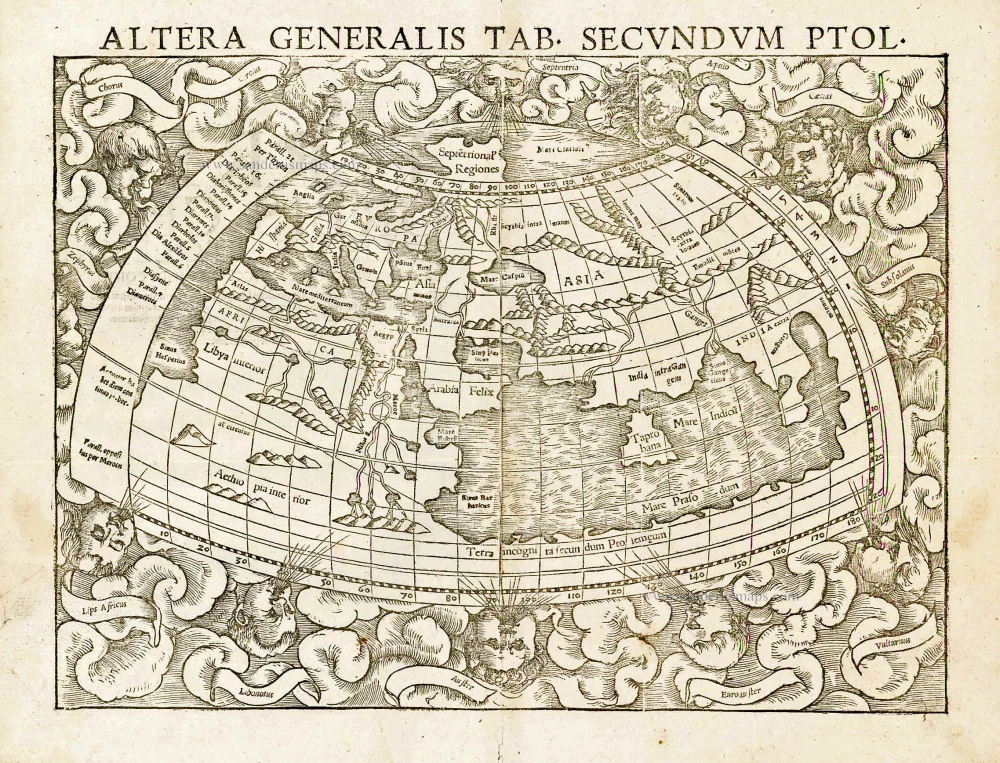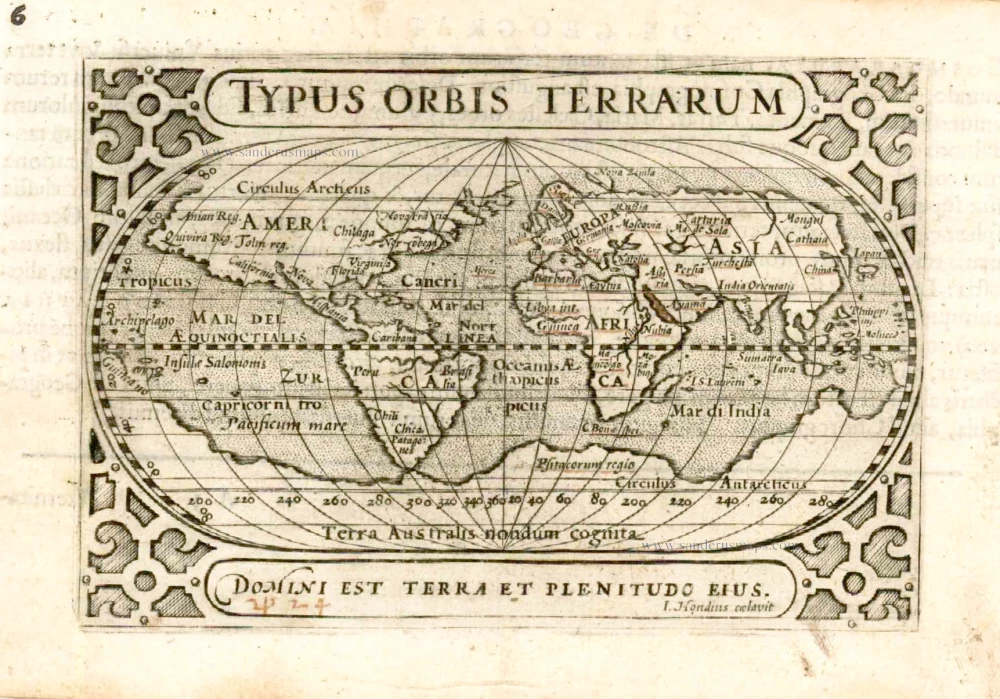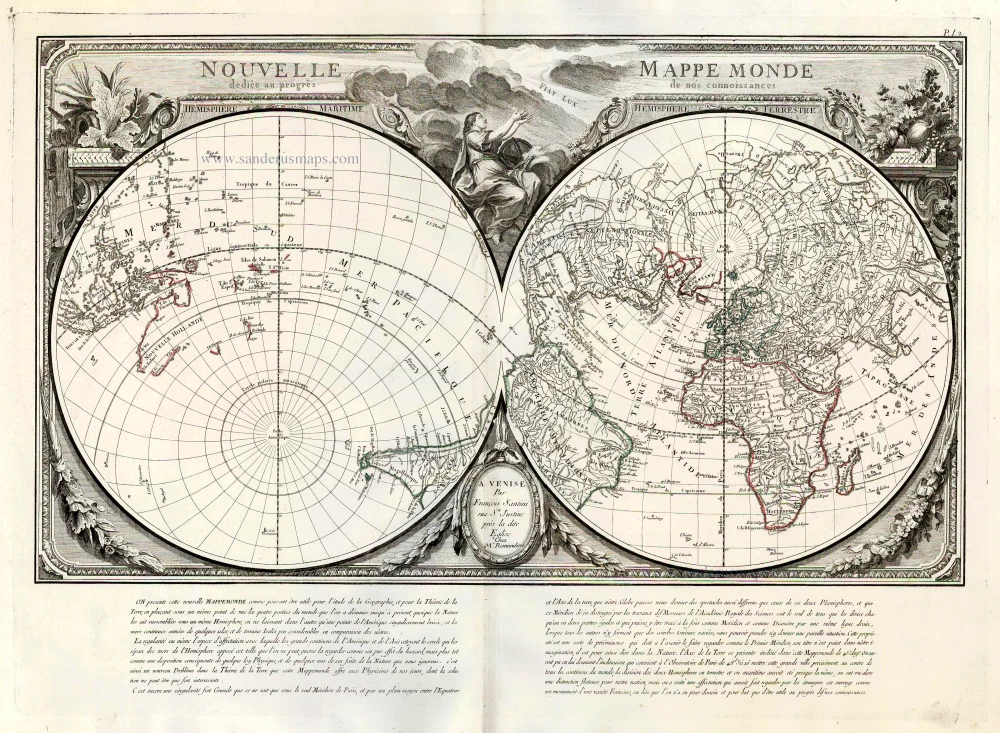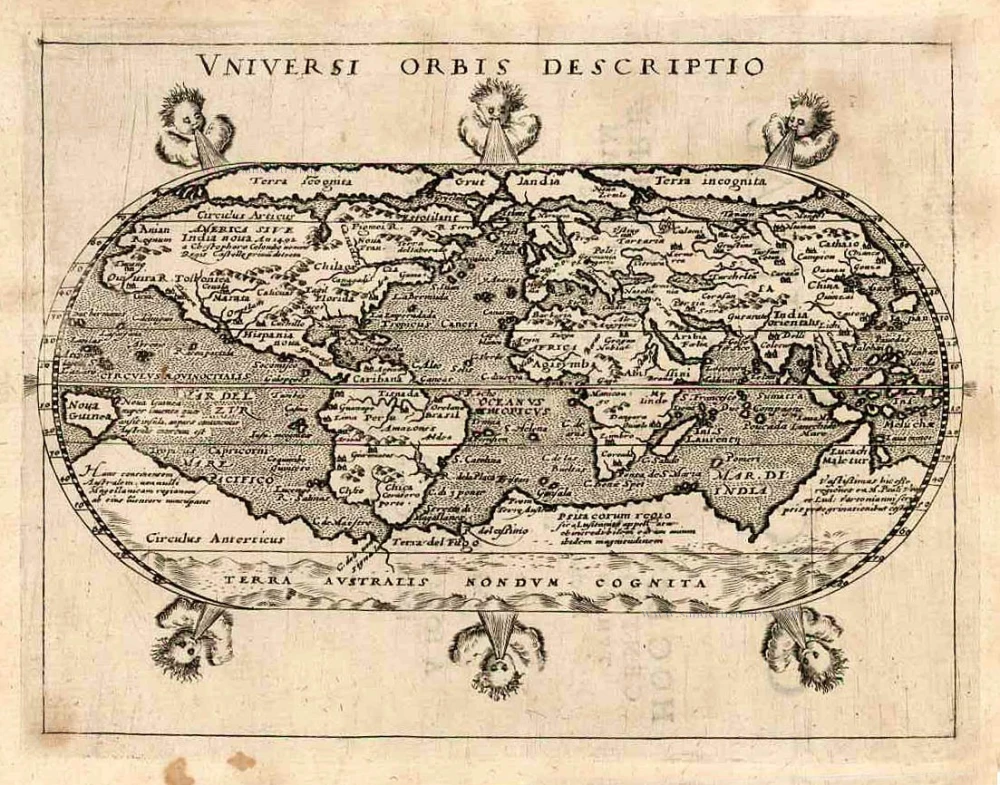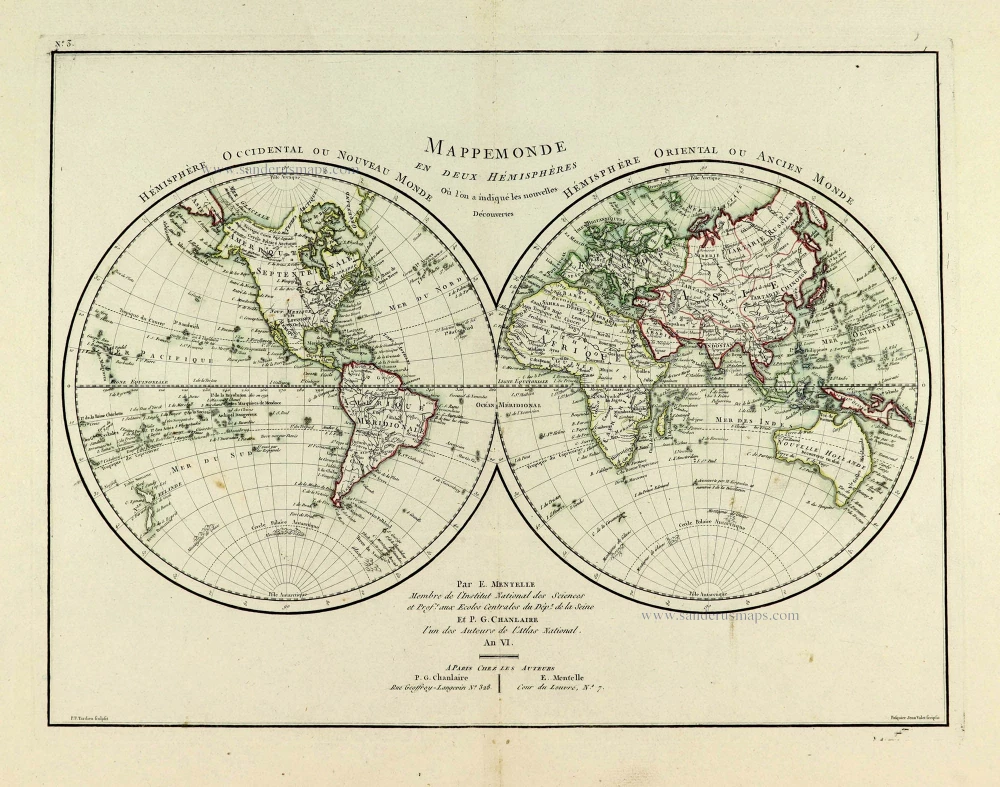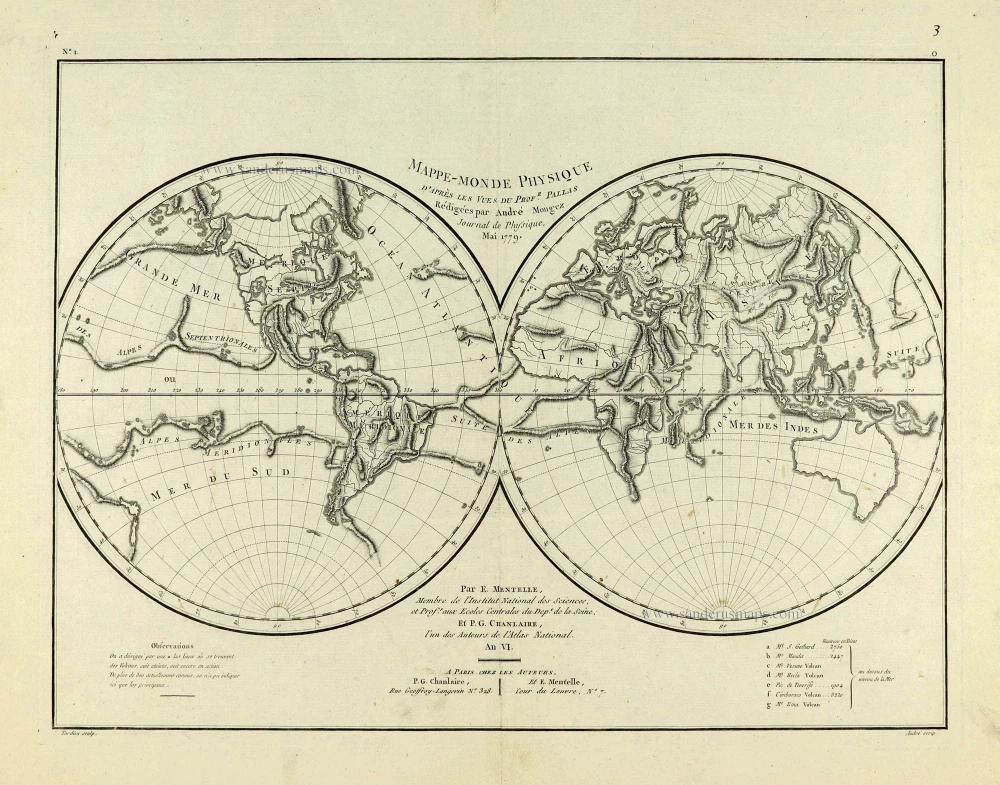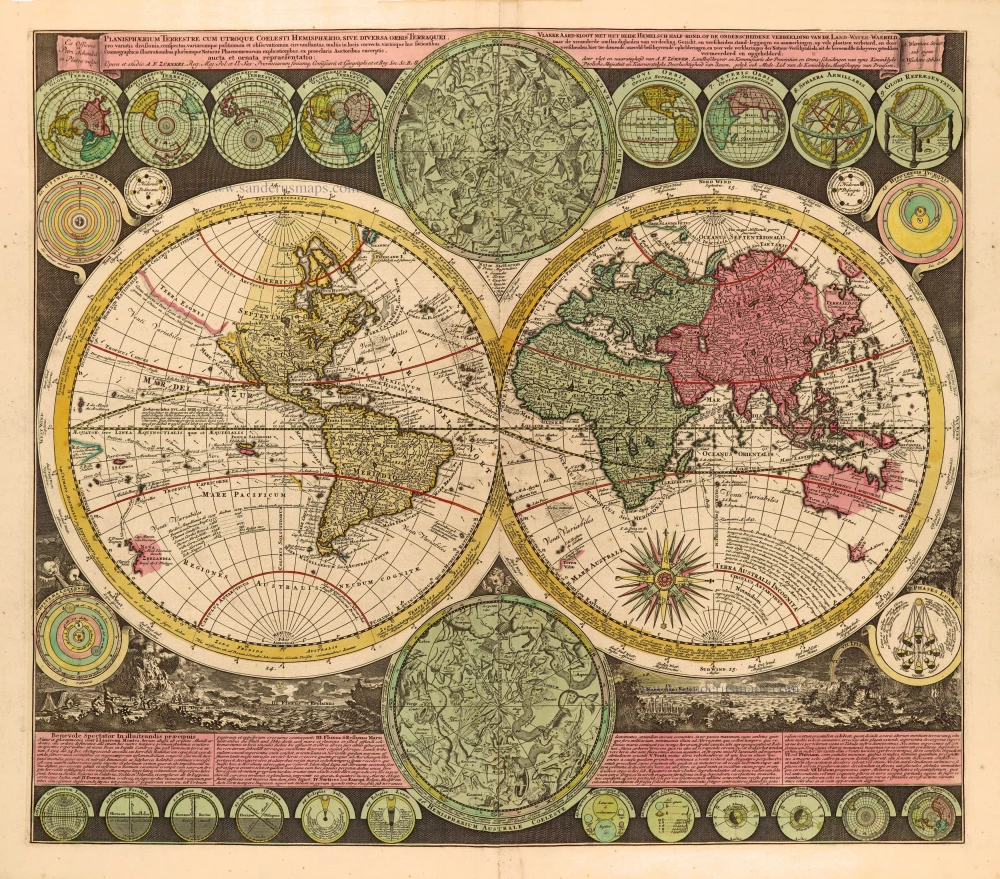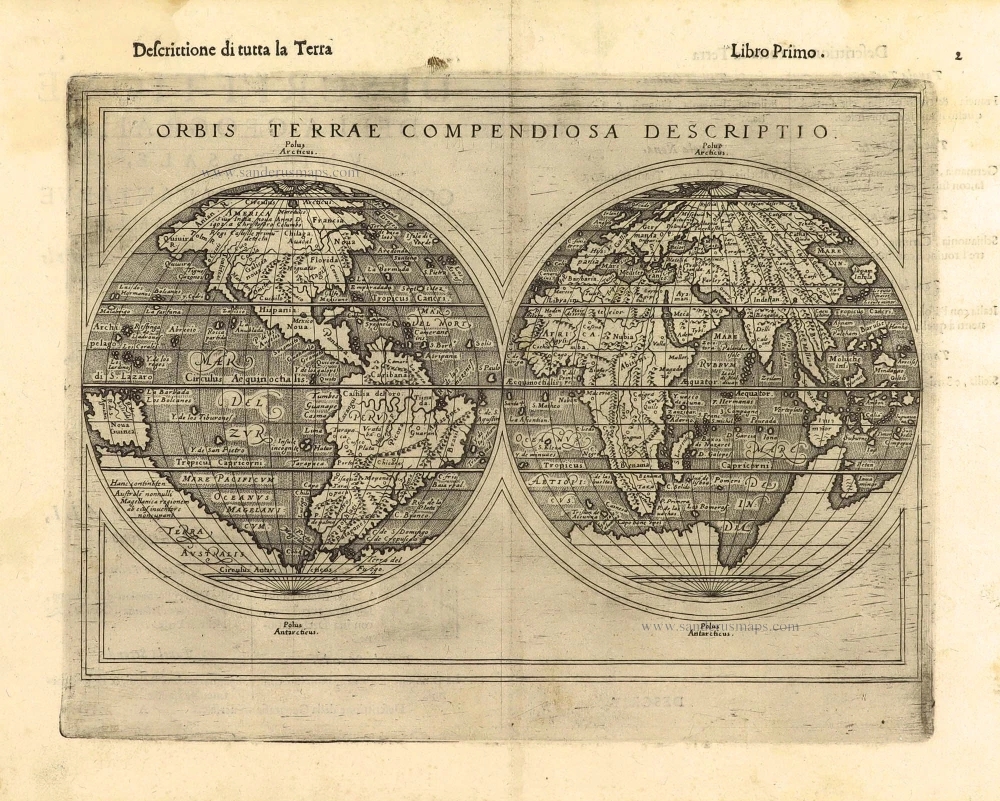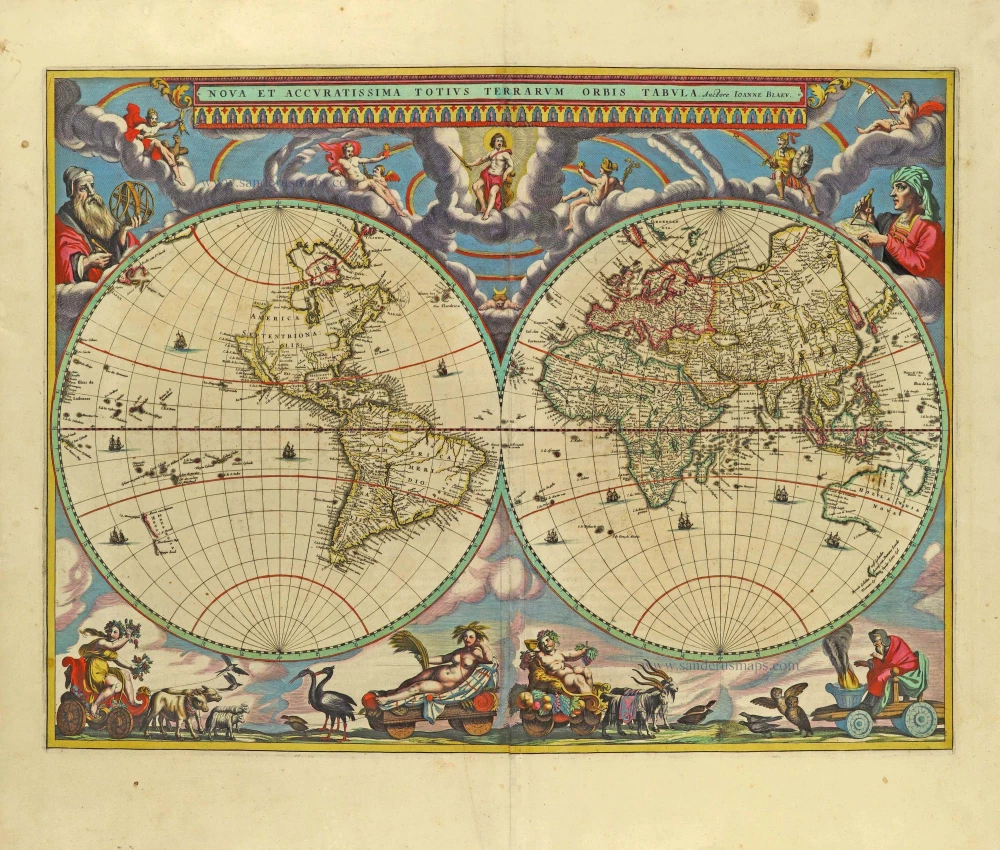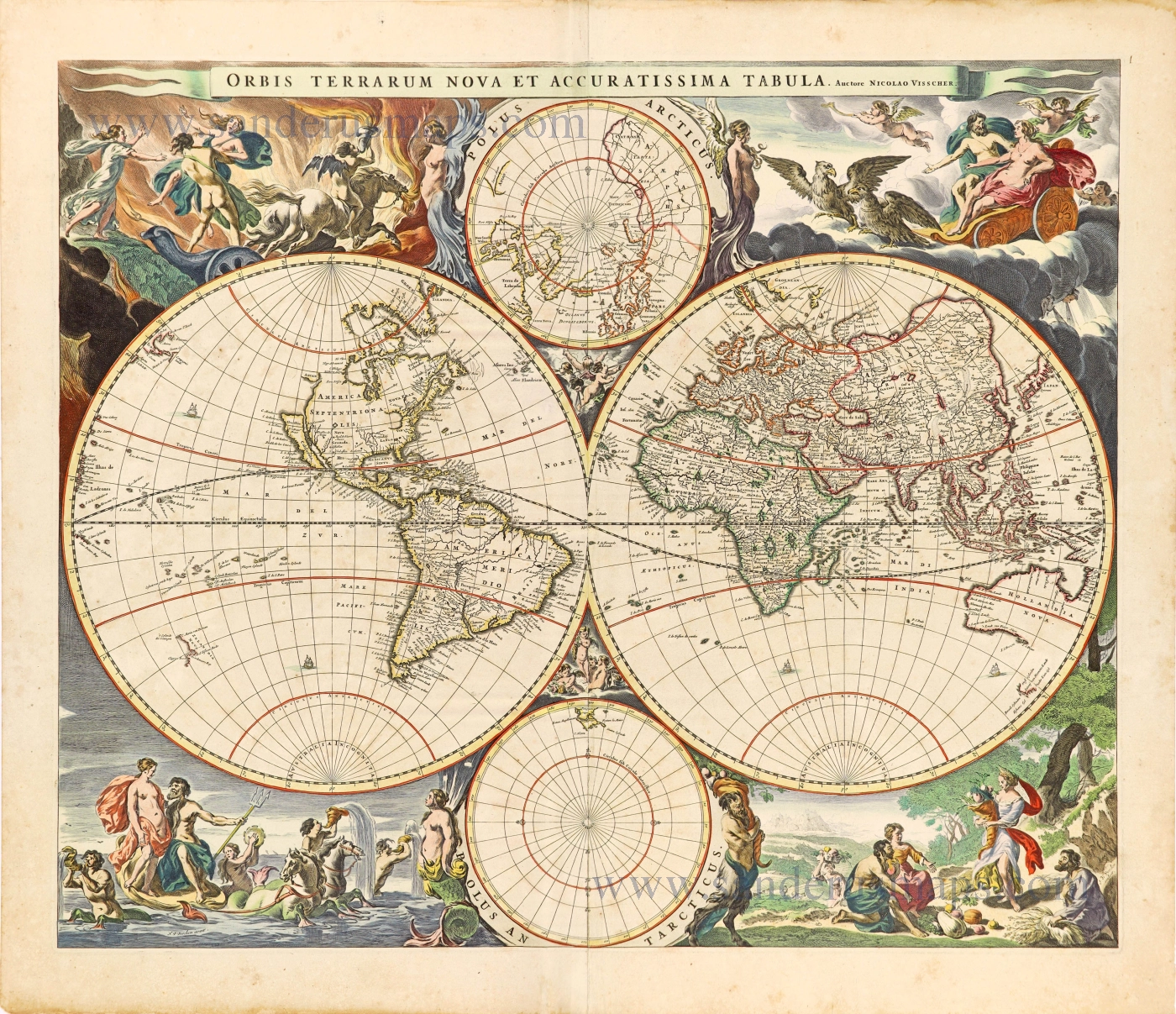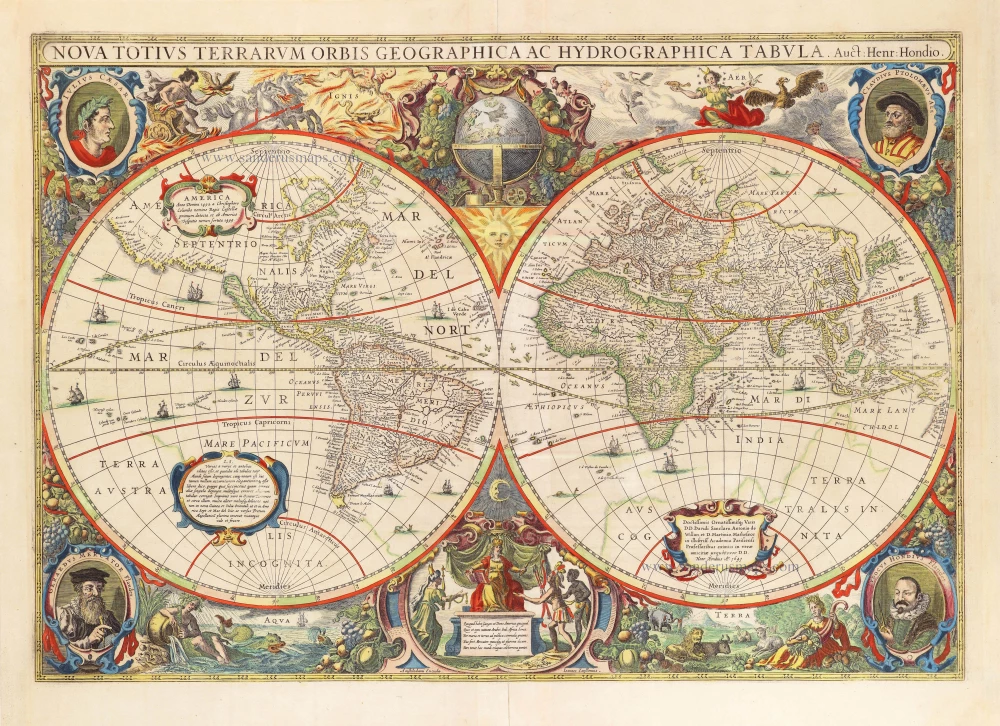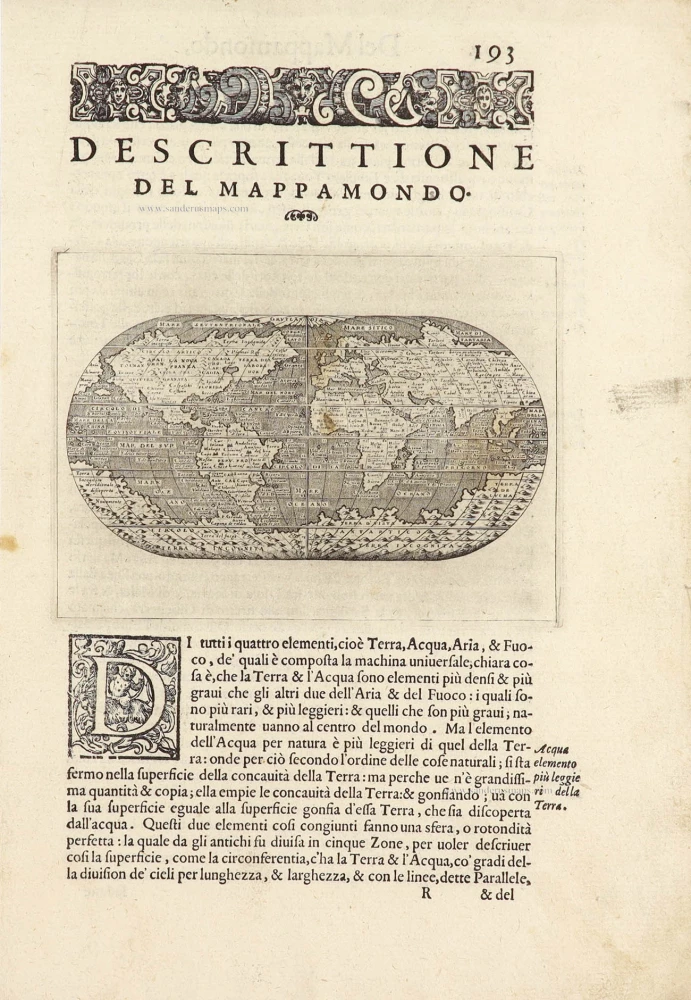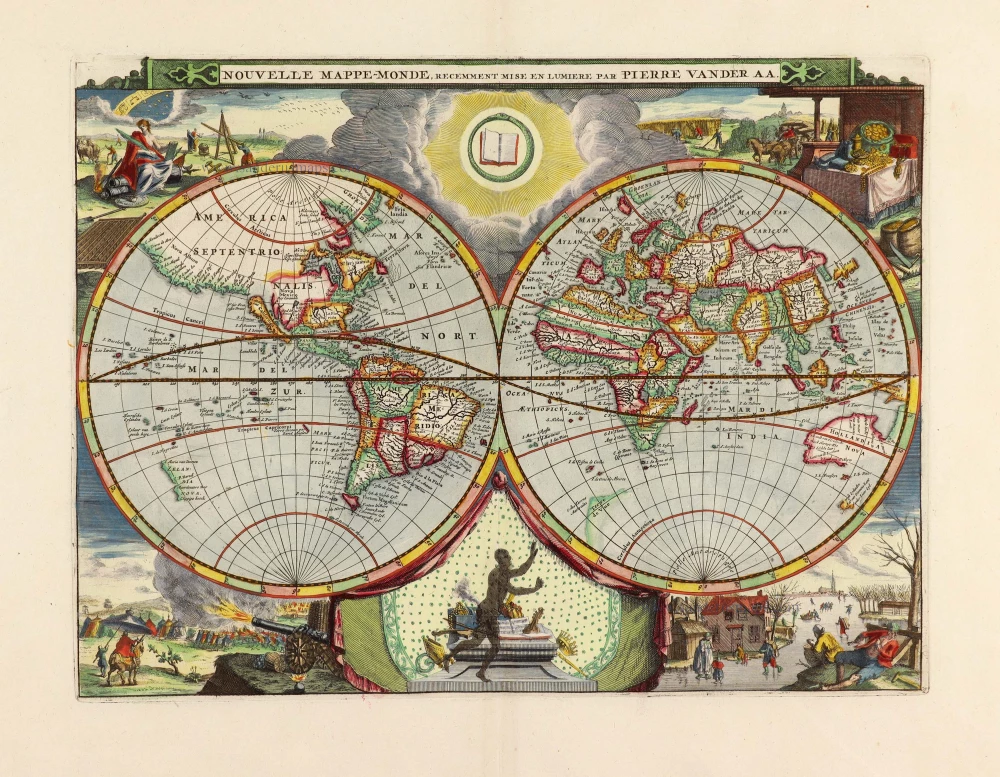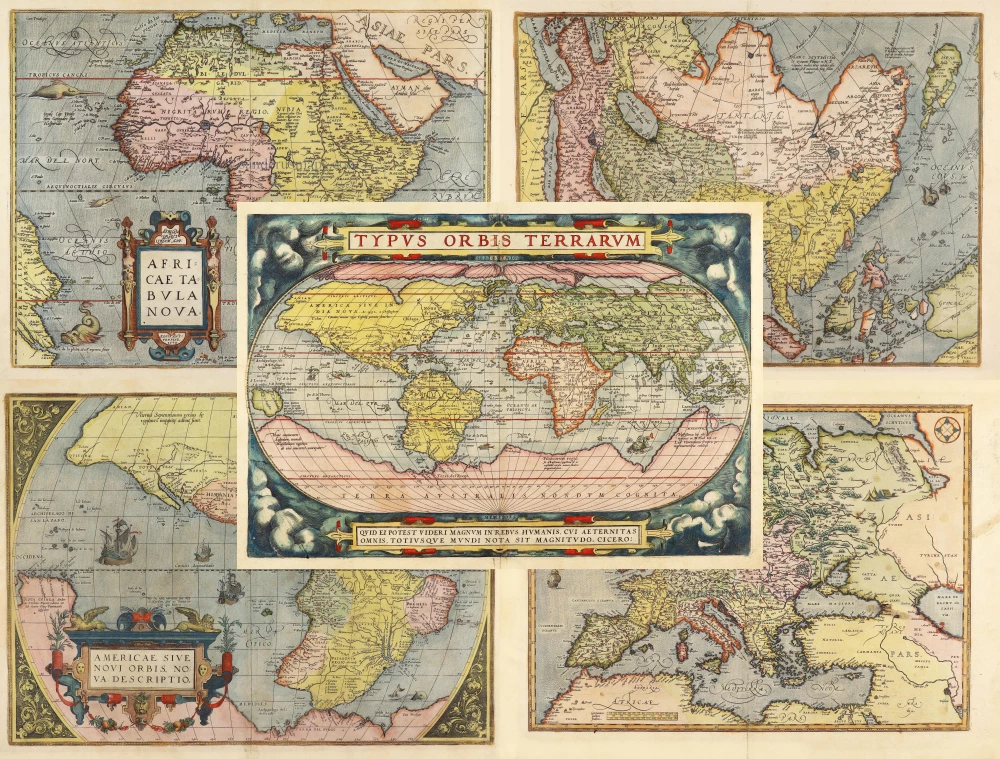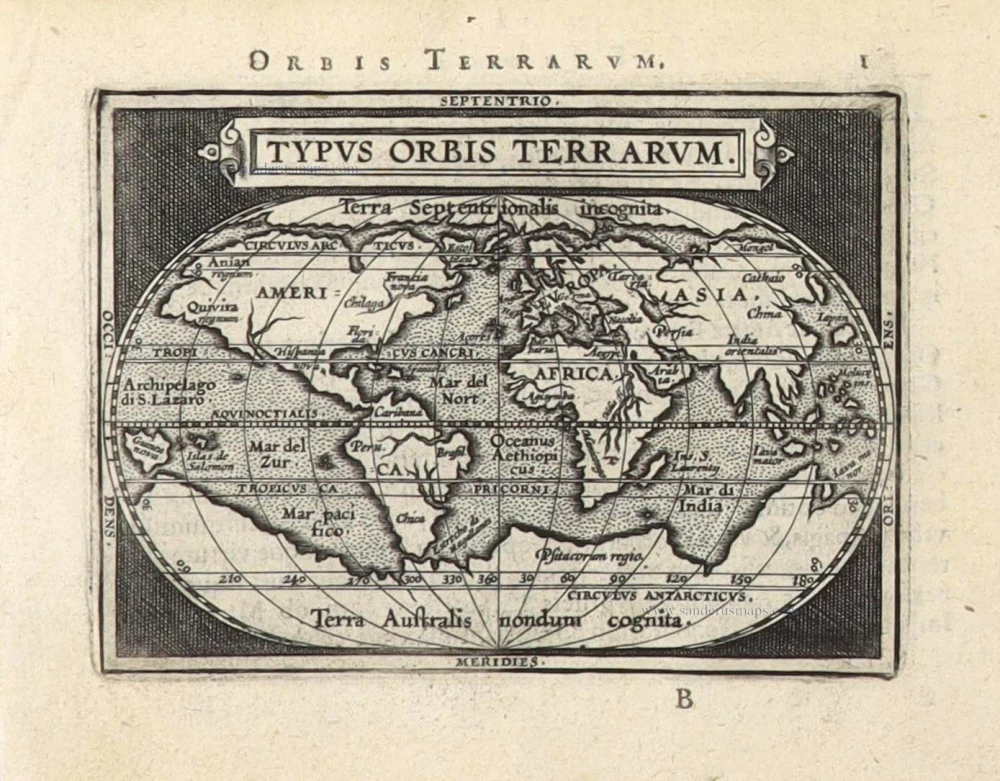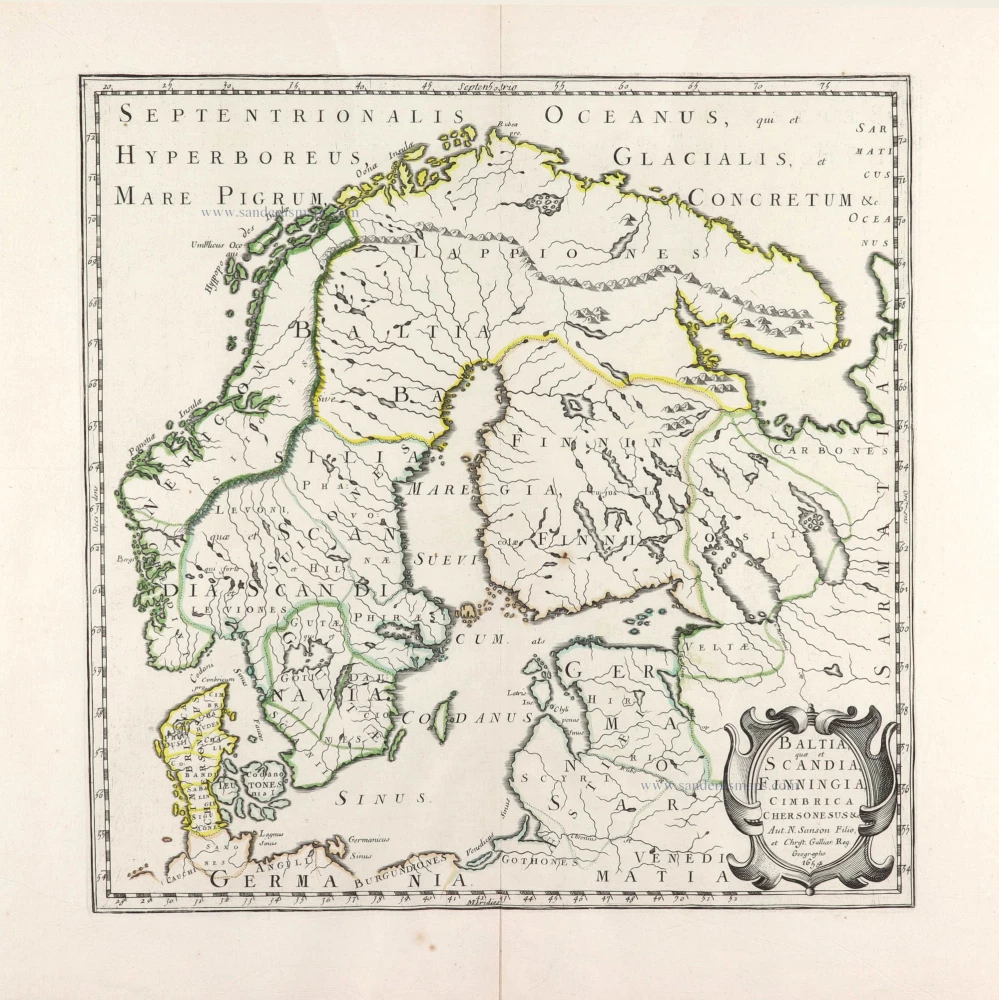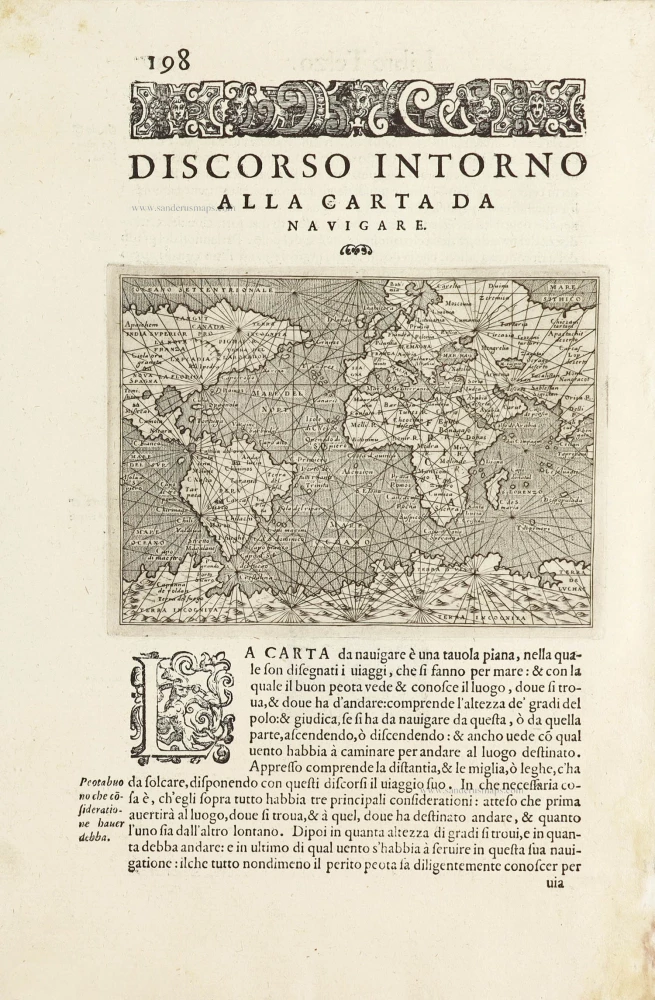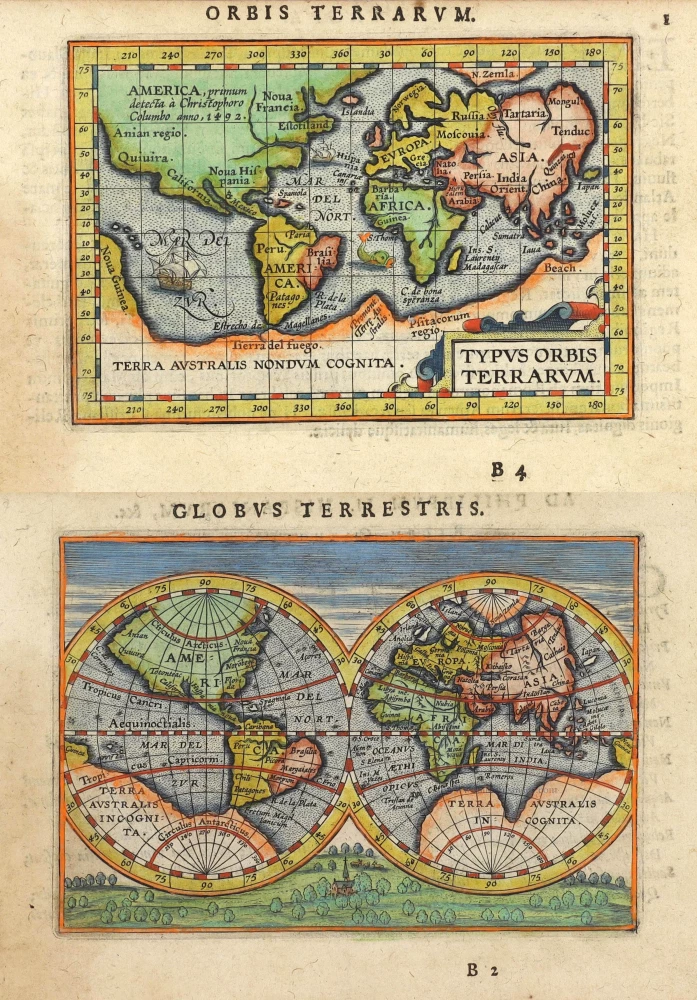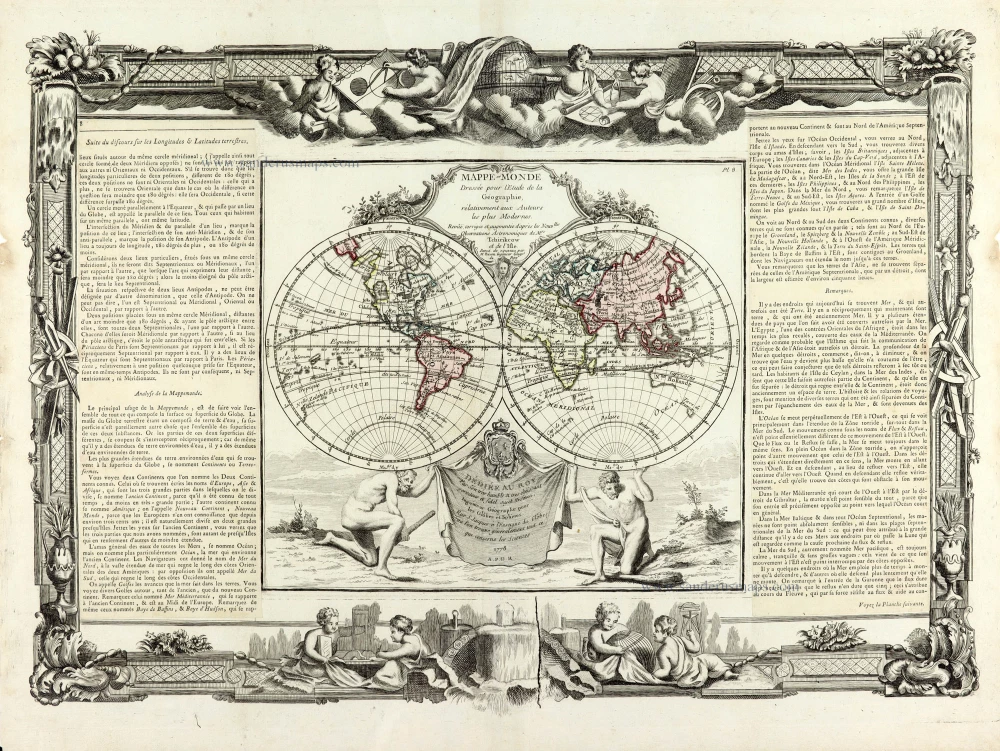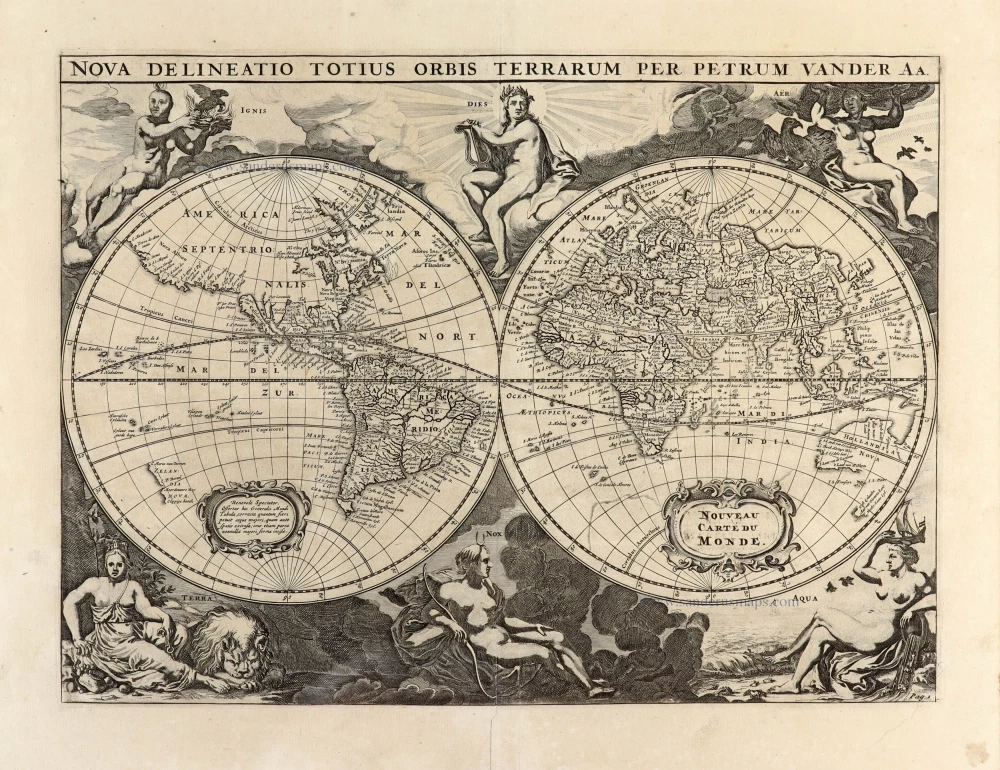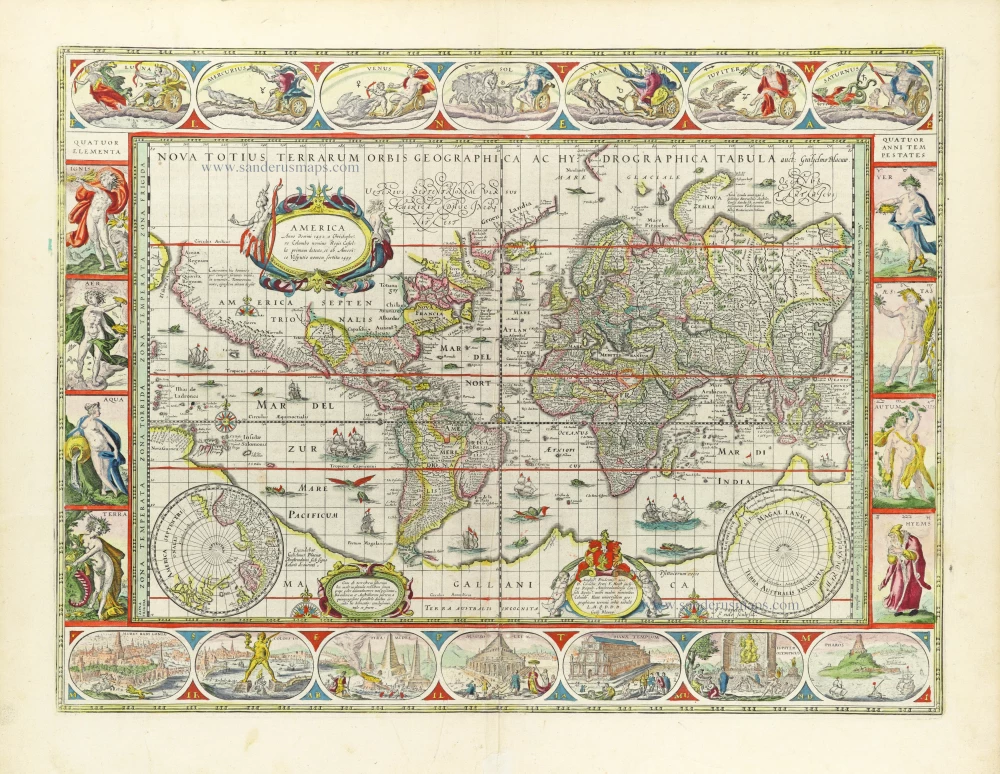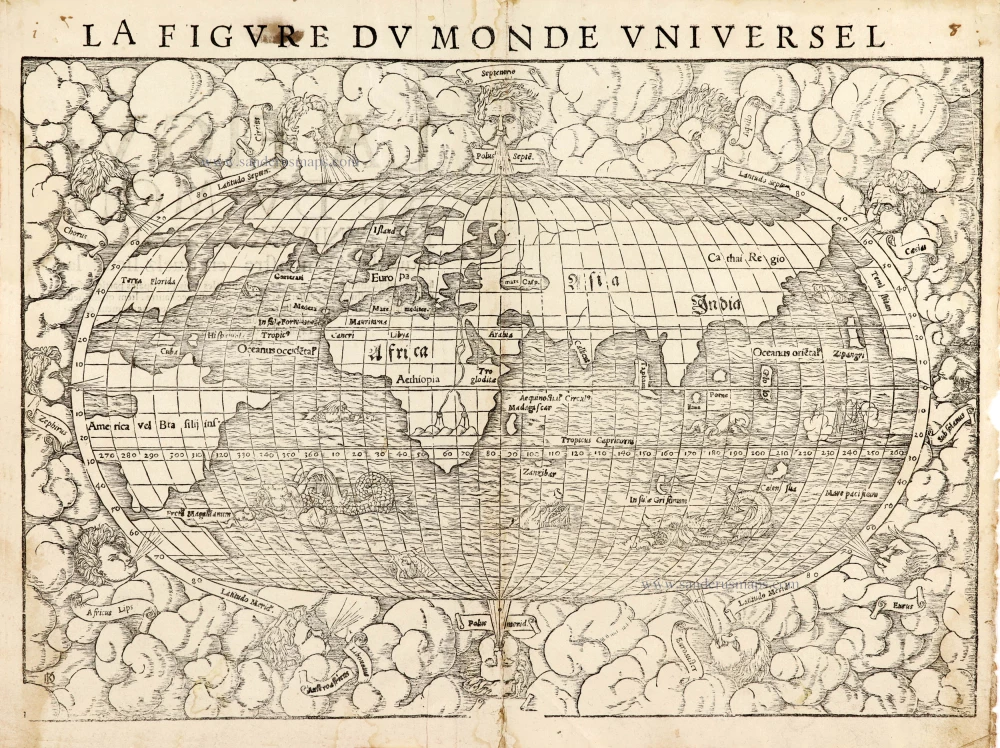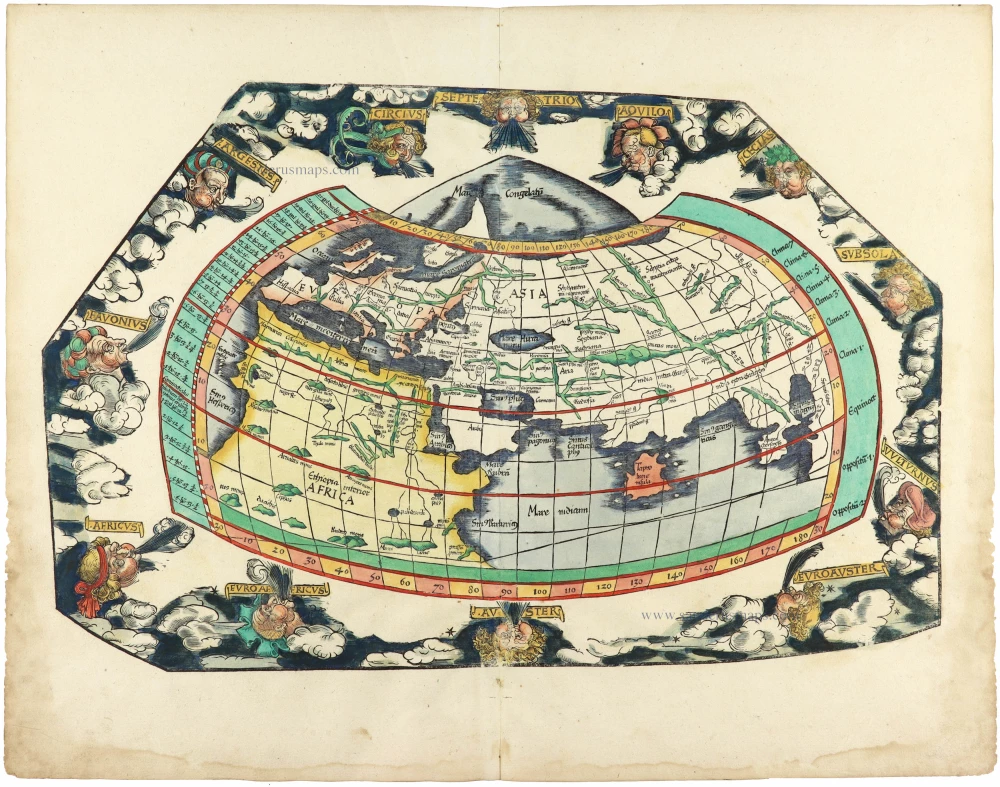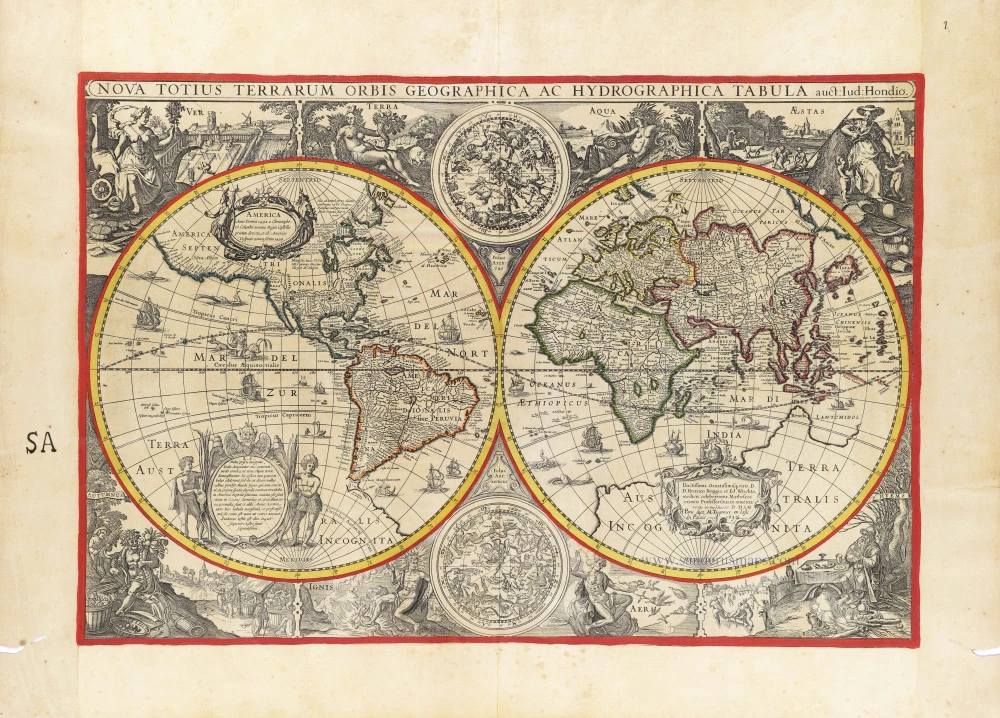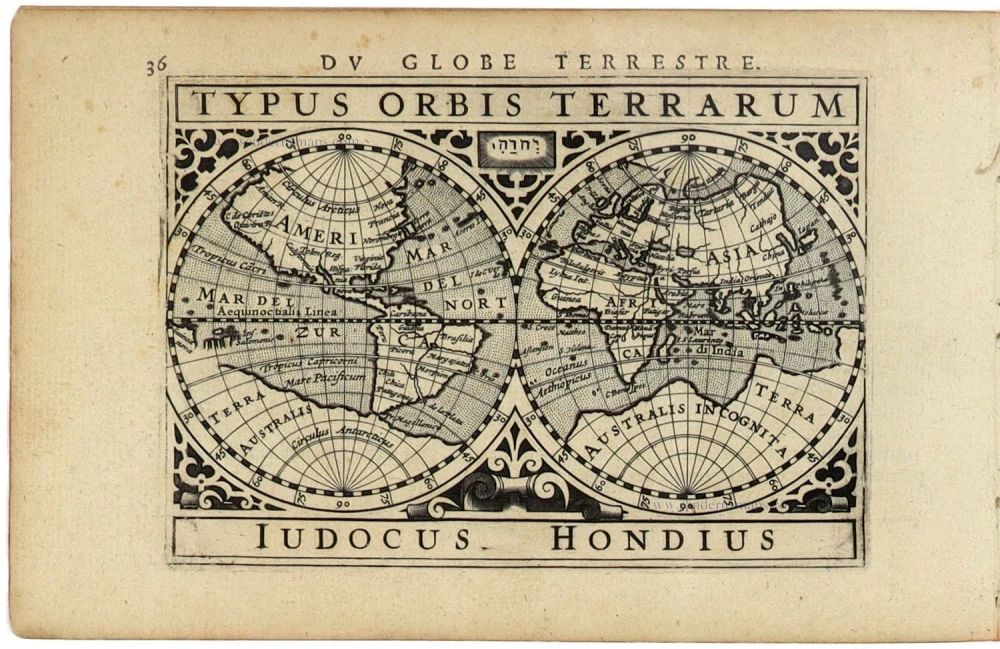World by Giovanni Magini. 1597
This small mariner's map is based on one of the most important world maps of the 16th century: Gerard Mercator's multi-sheet map of 1569. The map reflects the belief in wide Arctic sea passages and depicts a huge southern continent to which Magini has added fanciful ranges of mountains. A fine network of rhumb lines crisscross the map.
Magini Giovanni Antonio (1555-1617)
Giovanni Antonio Magini was an Italian astronomer, astrologer, cartographer, and mathematician. He was born in Padua and completed his philosophy studies in Bologna in 1579. In 1588, he was chosen over Galileo Galilei to occupy the chair of mathematics position at the University of Bologna. He was in contact with many well-known figures of his day, including Ortelius, Tycho Brahe, Galileo and Johannes Kepler.
Magini supported a geocentric system of the world in preference to Copernicus's heliocentric system. Magini devised his planetary theory in preference to other existing ones. The Maginian System consisted of eleven rotating spheres, which he described in his Novæ Cœlestium orbium theoricæ congruentes cum observationibus N. Copernici (Venice, 1589). His most important work was the first printed atlas of Italy, published posthumously by his son Fabio.
He died in Bologna on 11 February 1617.
Universi Orbis Descriptio Ad Usum Navigantium.
Item Number: 30653 Authenticity Guarantee
Category: Antique maps > World and Polar
World by Giovanni Magini.
Title: Universi Orbis Descriptio Ad Usum Navigantium.
Engraver: Girolamo Porro.
Date of the first edition: 1596.
Date of this map: 1596.
Copper engraving, printed on paper.
Image size: 135 x 175mm (5.31 x 6.89 inches).
Sheet size: 170 x 230mm (6.69 x 9.06 inches).
Verso: Latin text.
Condition: Excellent.
Condition Rating: A+.
From: Magini G.A. Geographicae Universae tum veteris novae . . . Venice, 1596.
This small mariner's map is based on one of the most important world maps of the 16th century: Gerard Mercator's multi-sheet map of 1569. The map reflects the belief in wide Arctic sea passages and depicts a huge southern continent to which Magini has added fanciful ranges of mountains. A fine network of rhumb lines crisscross the map.
Magini Giovanni Antonio (1555-1617)
Giovanni Antonio Magini was an Italian astronomer, astrologer, cartographer, and mathematician. He was born in Padua and completed his philosophy studies in Bologna in 1579. In 1588, he was chosen over Galileo Galilei to occupy the chair of mathematics position at the University of Bologna. He was in contact with many well-known figures of his day, including Ortelius, Tycho Brahe, Galileo and Johannes Kepler.
Magini supported a geocentric system of the world in preference to Copernicus's heliocentric system. Magini devised his planetary theory in preference to other existing ones. The Maginian System consisted of eleven rotating spheres, which he described in his Novæ Cœlestium orbium theoricæ congruentes cum observationibus N. Copernici (Venice, 1589). His most important work was the first printed atlas of Italy, published posthumously by his son Fabio.
He died in Bologna on 11 February 1617.

